As a homeowner, you may be wondering how big the space between the siding and the wall should be. Fortunately, we have done some research on this topic for you, and here is what we found out.
It is recommended to leave a 1/8 inch gap between the siding and the wall. Siding should not be close to the wall. Also, the gap can be sealed to protect your house from mold and fungi, which can grow when water enters through small holes.
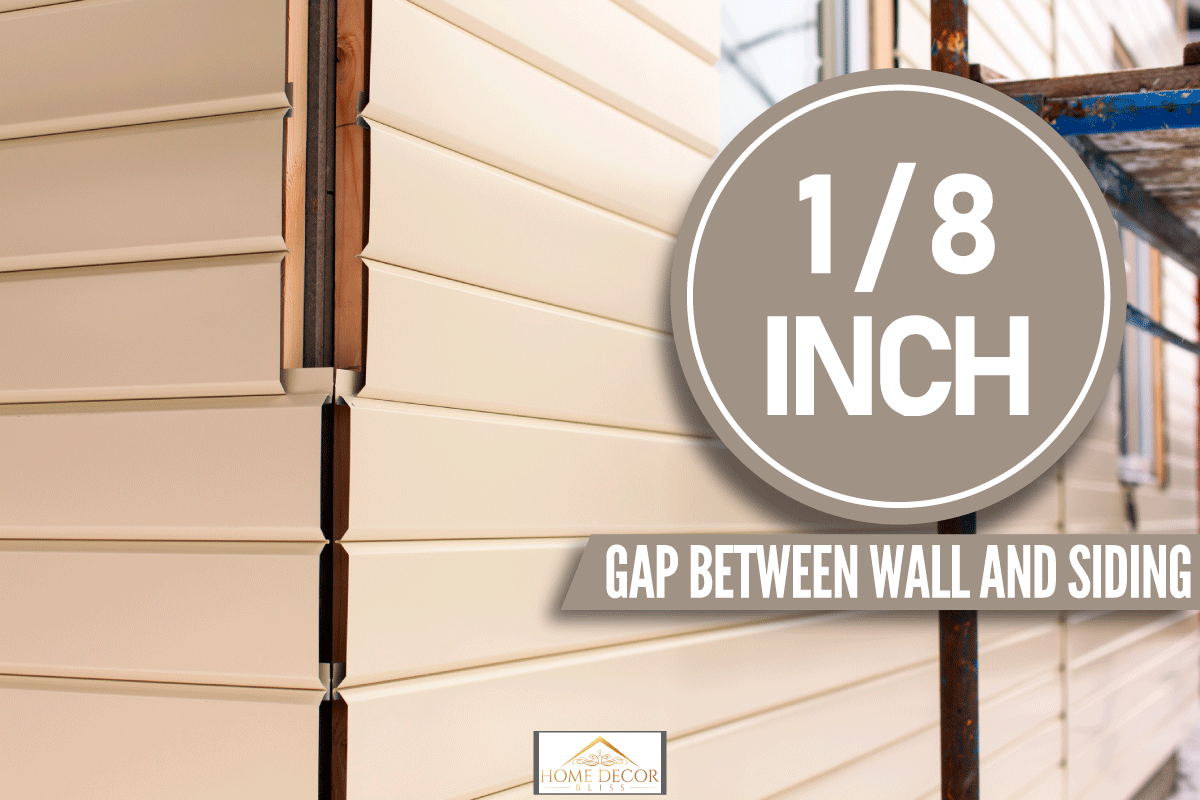
How Big Should Gap Between Siding And Wall Be?
Siding is a protective material that is attached to the outside wall of a house. Typically, siding needs clearance far more than other materials.
It is better to apply siding to a smooth surface and not directly onto a wall. During installation, make sure to leave a gap of about 1/8-inch. You can leave a 3/8-inch gap with the flashing at the point it meets horizontally, and 3/8-inch at the point the siding joins the corner seam.
When installing siding above the brick part of an exterior but far onto the brick, it is advisable to install flashing to prevent water from accumulating on the brick. Always install flashing to the sheath beginning from about four inches above the point the change from brick to siding is supposed to be.

We may include affiliate links and curated AI content to highlight top design styles.
What Do I Need To Seal The Space Between Siding And Wall?
To seal the siding and wall of your house's exterior, you will need these tools: a caulk gun, sealant, cleaning hose, duct tape, measuring tape, hammer, primer solution, siding boards, brush, acrylic caulk, paint, and knife.
Click here to see this caulk gun on Amazon
After gathering these tools, the next step is to get your hands dirty by sealing the gaps and repairing the exterior of your house.
Click here to view this acrylic caulk on Amazon
When water gets behind the siding, it may lead to the accumulation of mold and rot, which can cause damage. This could affect the overall structure. So you need to seal the space.
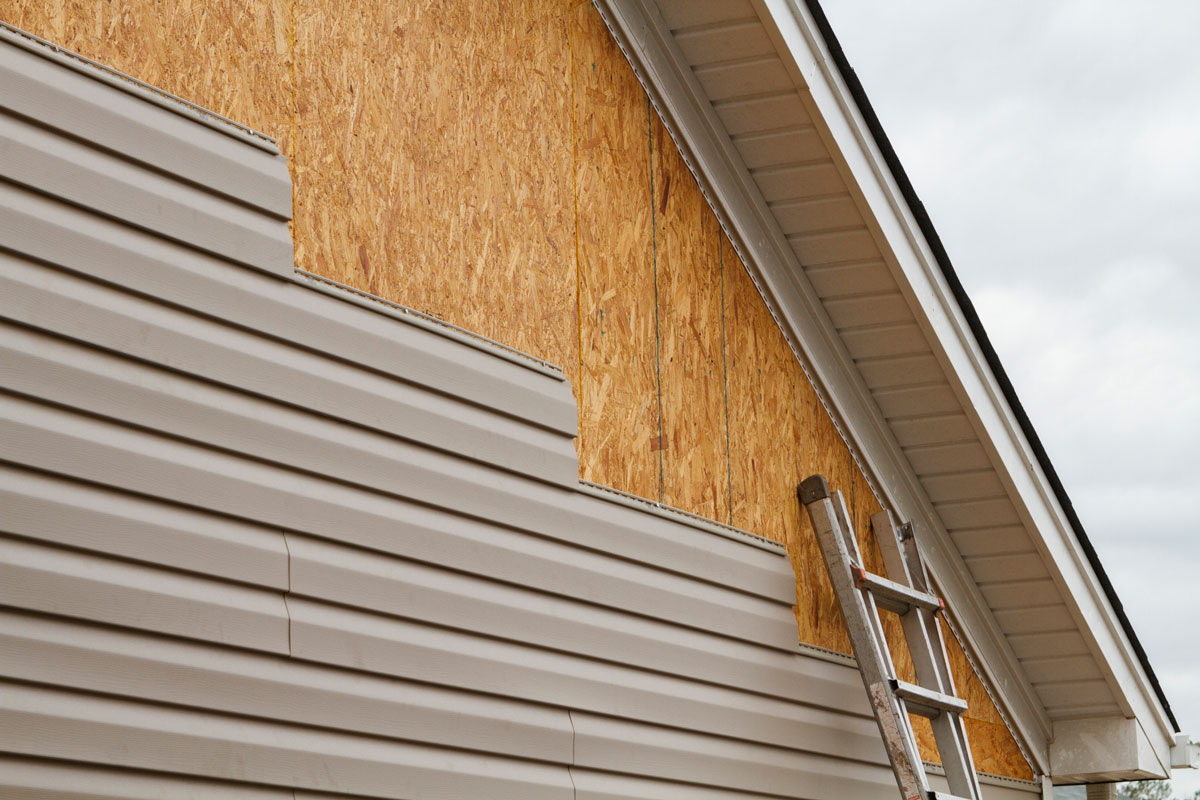
How To Seal The Space Between Siding And Wall
The space between the siding and wall of your home's exterior can be sealed. Sealing this gap is a way of protecting your home, increasing the value of your property, and beautifying the exterior of your house. Here is the step-by-step procedure for sealing the gap between the siding and wall.
Step 1: Clean And Caulk The Wall
There might be debris or mold inside the cracks, and this can make your house vulnerable, so it is advisable to spray the wall with water mixed with a cleaning agent.
Once the dirt has been cleaned, let it dry, then use a silicon-based caulk with a caulk gun. Next, use the caulk to fill all the holes and cracks that you see.
Step 2: Measure The Wall
Using a measuring tape, measure and note down the height and length of the wall. Next, compare what you measured out with your siding. Since the wall is bound to enlarge as a result of thermal expansion, it is best to cut them at least 2-2.5 inches shorter than the wall.
Step 3: Prep The Siding Strip
Use a primer to spray your strips in order to level the sharp edges and to enable the painting to go smoothly. Also, get strips that will fit into the quoin by using a knife to score it.
To create a corner that would fit the exterior of your house, make two ends meet. To do this, support lumber will be needed to form a 90 degree angle. Measure an inch that is longer than the siding strip. You can use an industrial adhesive to screw along the length to ensure durability.
Step 4: Cover The Wall Corners
Cover the concrete corners and arrange the side corners by lathering a sealant layer on the concrete to prevent moisture from building up. Ensure that it is well secured.
Step 5: Install The Siding Strips
Make sure that the ends of all the strips are primed before you attach them. After that, set the strips that are overlapping the floor but ensure you do not touch the porch pad. Next, position the succeeding strips in a horizontal manner for at least two inches, enough to seal the fastener.
Step 6: Seal The Siding And Paint
You can use duct tape as a sealant by placing it at the top of the siding strip until you get to the bottom side. Use a caulk gun to close the gap, and seal the strip.
Click here to see this duct tape on Amazon
Let the caulking dry before you get rid of the duct tape. Repeat the steps on other strips. When this is done, you can now paint the strips to make the exterior of your home look attractive.
When painting the strips, it is advisable to use waterproof paint to ensure that it does not sag or melt when you are cleaning it. Add some finishing touches, and you are done.
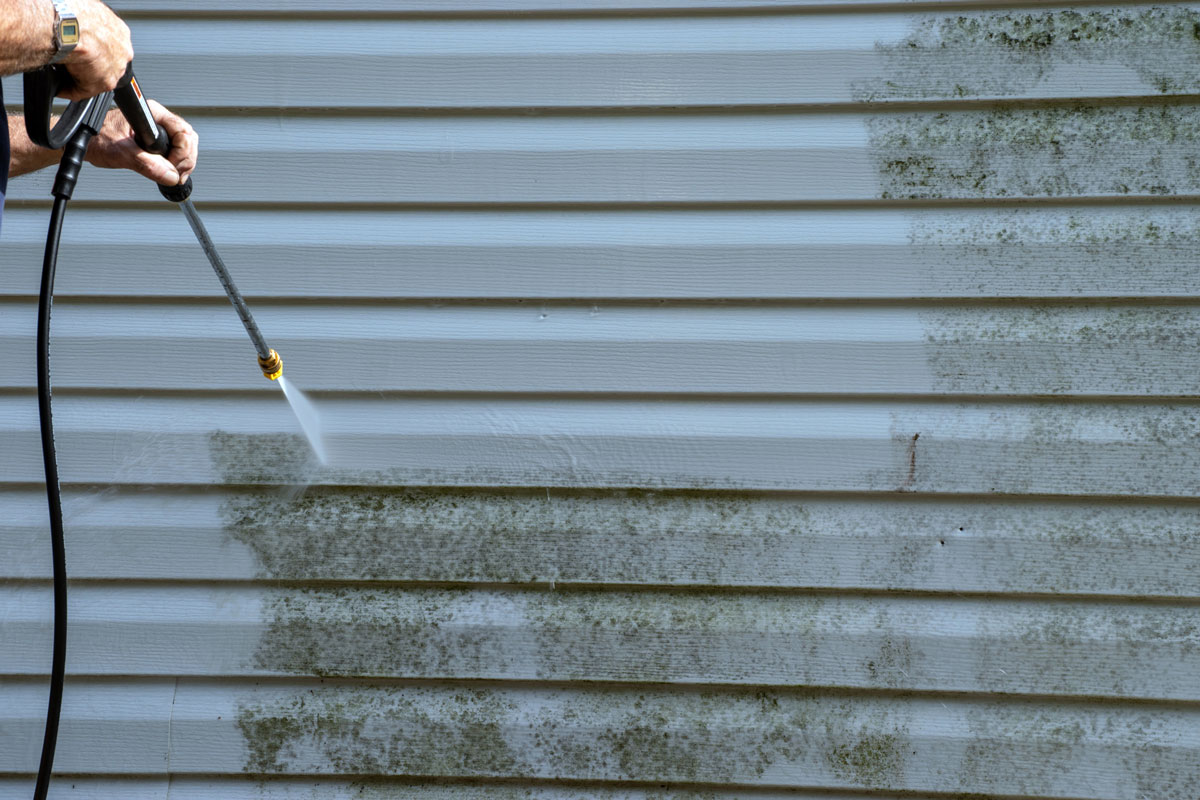
How Do I Maintain My Siding?
If you want your siding to last longer, you have to take care of it through regular maintenance. With little effort, you can prolong the lifespan of your siding. Here are things you can do to maintain your siding:
Wood Siding
- Inspect the siding at least two times a year, checking for signs of wear like rot.
- Repaint or restain the siding every five years. If you prefer using a clear sealant, reapplication should be done every two years.
- Remove dirt and dust using warm, soapy water and a brush. To remove mildew, you can use a solution of bleach and water, but the water should be more than the bleach.
Vinyl Siding
- Vinyl cannot be affected by pests but can warp or crack. It can also hold moisture underneath if it is not well installed and if it is damaged or loose.
- To keep your vinyl siding clean, all you need is a garden hose to rinse dust and dirt off.
- Impacts from heavy-duty items like lawnmowers can damage vinyl. Excess exposure to heat from barbecues can also make it melt. Things like these should be kept away from the siding.
Steel Siding
- Steel can withstand severe weather conditions, but if it gets scratched it may start to rust.
- To keep your steel siding clean, you can power wash it. This should be done once a year.
How Much Does Siding Expand?
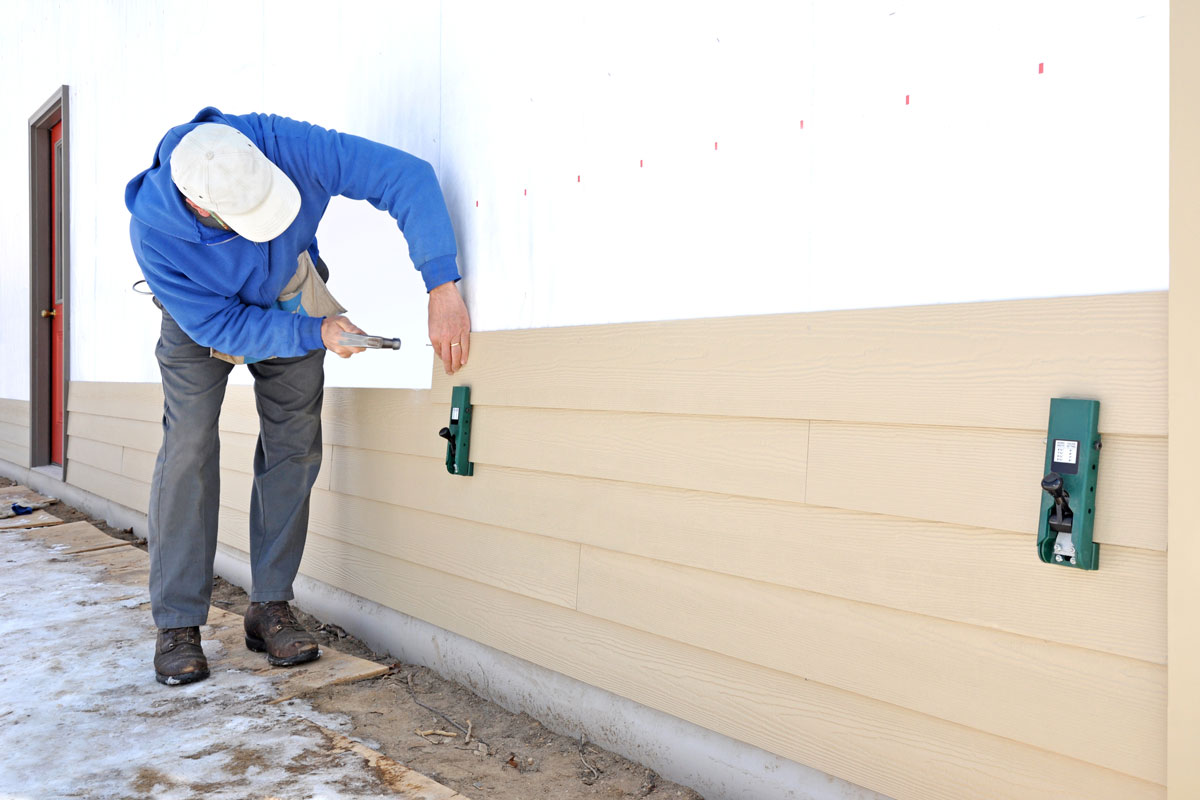
Standard siding may expand at an extreme temperature by 1/2. It is important to know how much your siding expands. This guides you during installation.
Siding tends to expand with extreme temperatures because of the plastic and resin it is made of. If the siding does not have room to expand, the process may lead to damage.
Should Siding Be Sealed At The Bottom?
Water is supposed to move out through the bottom of the board. Caulking it is not advisable and can lead to permanent damage. Additionally, do not caulk tongue and groove siding board.
What Is Fiber Concrete Siding?
Fiber concrete siding is a durable and low-maintenance material that is mostly used on residential houses and commercial projects.
It is a semi-rigid material that gives substantial protection without losing flexibility. When installing it, make sure it is at least 6 inches above the ground.
Fiber concrete siding offers some advantages which traditional siding materials doesn't offer. What makes it stand out is its low maintenance requirement, although this will depend on your geographical location, and how exposed the building is.
Pest and extreme temperature changes don't affect fiber cement, but they may be occasionally affected by the impact of the elements. Cracks in or around the siding, bad paint, mildew, and warping are signs of damage.
The performance of fiber concrete siding depends on the manufacturer, but the best ones are usually:
- Non-combustible: This means that it will not catch fire easily.
- Produced to withstand damage from rot and moisture.
- Produced to withstand harsh weather conditions.
- Unappealing to pests like termites, woodpeckers, and others.
To Wrap Up
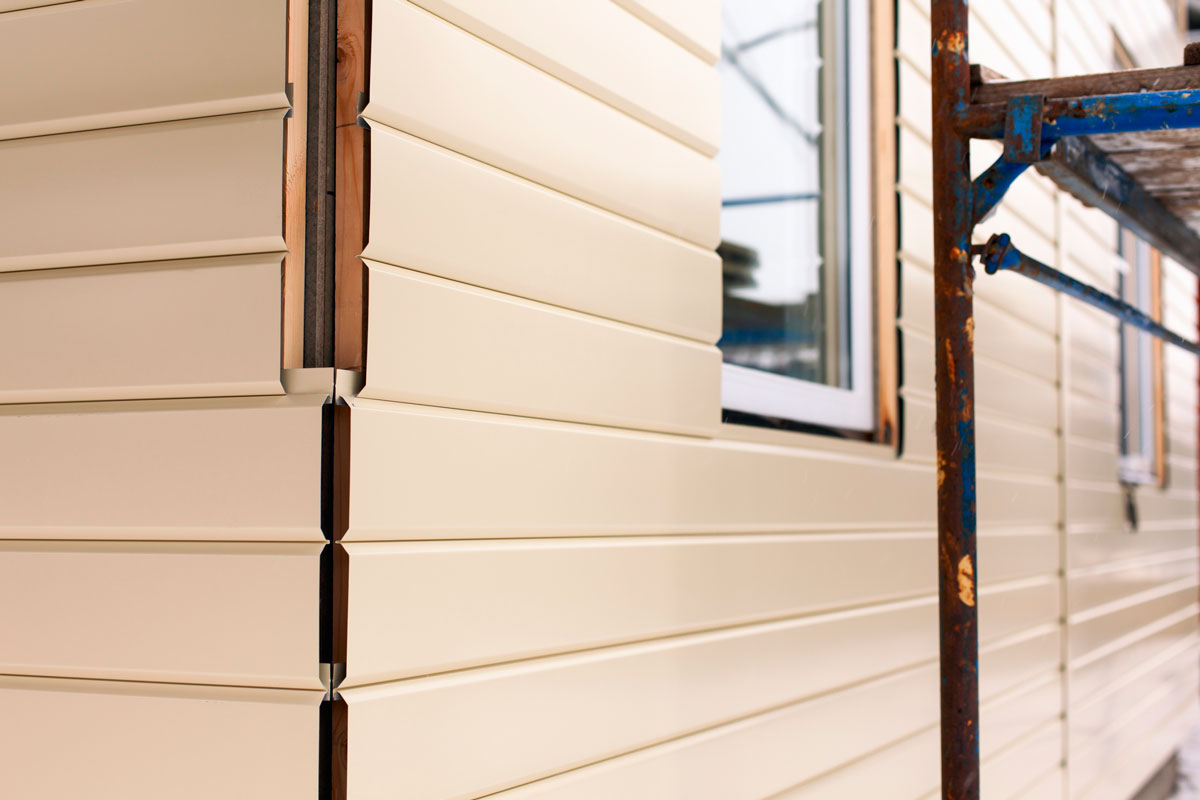
When installing the siding in your home, make sure there is a 1/8-inch gap between it and the wall. You can seal most gaps between your siding and wall by yourself. But always contact a professional if you are finding it difficult to do the task.
If you enjoyed reading this post, here are similar articles you may like:
What Colors Go With Cedar Siding?
Should You Paint Or Replace Siding? [By Types Of Siding]
Should Soffit Match Siding Or Trim? [And What Color To Paint It]






